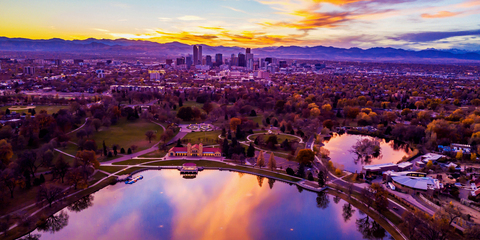The Byers-Evans House is one of last remaining residential structures in the Civic Center area. Before Mayor Speer set out to create the park in the early 1900’s, this district was mainly residential. This lone mansion, located under the eaves of the original wing of The Denver Art Museum, houses a plethora of Denver history. It was once the home of two of Denver’s most prominent families.
The Byers family built the home in an Italianate style and lived here from 1883 until 1889. Before arriving in Denver, William Byers was a prominent politician in Omaha, Nebraska. He arrived in Denver in 1859 hoping to take advantage of the gold mining in the area. Along with him he brought a printing press and began to publish the region’s first newspaper. He became the owner and editor of Denver’s first publication, The Rocky Mountain News.
When Byers moved his family to a new home south of the city, he sold this home to William Evans. William’s father, John Evans, was Colorado’s 2nd territorial governor and had been appointed by Abraham Lincoln. The family moved to Colorado from Evanston, Illinois where John Evans had founded Northwestern University. After arriving in Colorado, he also founded The University of Denver.
William became highly influential in expanding the railroad throughout the region and was very involved with the construction of The Moffat Tunnel. This tunnel, located in the mountains west of Denver, burrows beneath the Continental Divide and expanded the railroad from Denver to the western slope. William was also the owner of The Denver Tramway Company. The house still has a bullet hole near the front entrance from a time when trolly company employees were striking to protest low pay and working conditions.
In 1900, William’s widowed mother and his unmarried sister Anne also moved into the home. Anne is remembered for being a staunch supporter of the art community in Denver. Members of the Evans family continued to live in the home until 1981. In 1981, the home along with all of its furnishings, was donated to The Colorado Historical Society. The home has been restored to an early 20th century time period and displays many of the original furnishings from the family.
The Byers-Evans house is open year-round for tours and historical programs and also houses The Center for Colorado Women’s History.
We’ll now head to our next stop is going to be The McNichols Building located on the northern edge of Civic Center Park.



